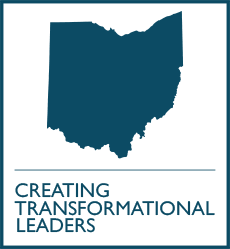Tips & Guidelines
Developing & Giving a Medical Presentation
Why are Presentation Skills Important?
- Provides the best medical care by keeping colleagues knowledgeable in current research and technology
- Publicizes your findings and research
- Improves opportunities for further funding and grants
- Obtains patient referrals
What Are the Qualities of Effective SPeakers?
- An organized presentation with a clear introduction and conclusion
- A limited number of clearly defined objectives
- Effective use of visual aids
- Controlled use of non-verbal communication including gestures, facial expression and posture
- Effective use of verbal communication including tone, speed, volume and absence of fillers (e.g., Saying “like,” “uh,” “um”)
- Ability to keep the audience engaged by using relatable examples and stories to emphasize major points
- Interest and enthusiasm in the subject
- Management of audience questions and comments to support the main points of the presentation
Planning Your Talk
Introduction
Comprises three parts:
- Opening remarks to capture audience attention
- Thesis during which purpose of the talk is stated
- Overview provides the outline of the talk
Body
Depending on your unique topic, the main section of your talk can be granted in a number of ways:
- Problem/solution
- Advantages/disadvantages
- Chronological comparisons/evolution
- Definition/examples
- Good news/bad news
Conclusion
Comprises three parts:
- Review that summarizes the main points
- Plan of action that calls for specific actions to be taken on part of the audience
- Closing remarks to conclude your presentation
Verbal Communication
- Use conversational language that varies in length and structure.
- Define technical terms even if you think the entire audience should know the term. There may be audience members who are not familiar with your area of research.
- Speak slowly and carefully.
- Use pauses appropriately to give the audience a chance to process the information.
- Speak clearly and alter your tone for emphasis.
- Allow your voice to demonstrate your enthusiasm for your topic.
- Avoid fillers such as “uh” or “um.” A pause is an acceptable alternative.
- Take several deep breaths prior to your presentation to help keep your focus and speak more clearly.
NonVerbal Communication
- Choose clothing that conveys professionalism and confidence.
- Approach the podium with confidence and a smile.
- Smile at the audience and thank them for attending.
- Do not lose your composure even if something unexpected happens.
- Stand straight with a comfortable stance and lean forward with your arms uncrossed.
- Do not walk continuously during the presentation, move with purpose — from one part of the room to the other during topic switches or towards the audience to recapture attention.
- Avoid repeated motions such as shuffling, hand tapping, fidgeting.
- Gesture naturally and keep arms at your sides when not gesturing.
- Keep your hands out of your pockets, this implies lack of confidence or shyness.
- Make eye contact with as many audience members as possible.
- Match your expression to what you are saying.
Visual Aids
- Consider passing out paper handouts. Handouts can go home with the audience and can provide additional detail. However, be aware that handouts can also be distracting.
- For information about creating PowerPoint presentations, please refer to “Tips for Designing PowerPoint Presentations”.
How to Manage Nervousness
- Practice in front of a mirror or a friend.
- Know the material well but don’t have it memorized.
- Try to relax your body. Use techniques before the presentation to manage your stress including positive visualizations.
- Control your breathing. If you start to speak too quickly, take a breath and slow down.
- Find one person in the room who is listening intently and approvingly and imagine you are only speaking to them.
- Imagine you are talking to a small group of your friends. Try to speak naturally as if you were talking to them.
- Prepare your notes with larger than normal font and headings that are highlighted. This will enable you to refer quickly back to your notes.
How to Handle Audience Questions
- Stay calm, keep eye contact with the audience member, then shift focus to entire audience when answering the question.
- Restate the question for the audience.
- Respond in a way that supports your presentation’s main points
- Be aware of emotionally charged or provocative questions. Restate the question in a more neutral manner that aligns with your thesis.
- Keep track of the time. Tell the audience when there is time for only one more question.
- Do not ask “Did I answer your question?”
- Do not say “That is a good question.” This implies the other questions are not.
- If you do not know the answer, state that you do not know. Explain why you do not know the answer, make a note and promise to find the answer. Then move to the next question.
Additional Resources
- Standing Ovation: How to Be an Effective Speaker and Communicator, James C. Humes, 1988
- The Sir Winston Method: The Five Secrets of Speaking the Language of Leadership, James C. Humes, 1991
- ASAP: The Fastest Way to Create a Memorable Speech, William Mooney and Donald Noone, 1993
- You’ve Got to Be Believed to Be Heard, Bert Decker, 1992
Contact
Joanne Fabick
Administrative Coordinator
Phone: 330.325.6770
Email: jef@neomed.edu
Department Chair
John Boltri, M.D.
Phone: 330.325.6787
Email: jboltri@neomed.edu


